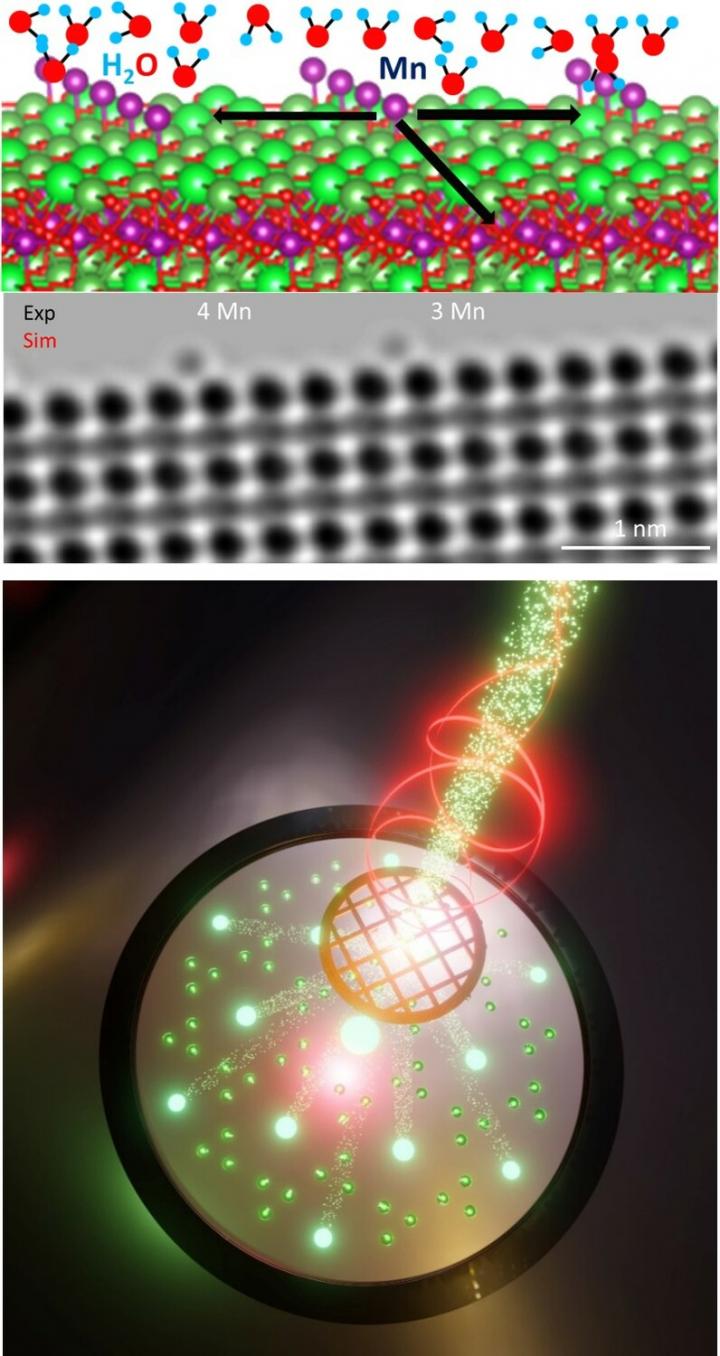German Research Foundation reconfirms support for Göttingen CRCs
The German Research Foundation (DFG) has extended its funding for two Göttingen Collaborative Research Centres (CRC) from 1 July 2021. This means that CRC 1073 “Atomic Scale Control of Energy Conversion” at the Faculty of Physics at Göttingen University will go into its third successful funding period. The CRC started in October 2013, coordinated by Professor Christian Jooß from the Institute of Material Physics. CRC 1286 “Quantitative Synaptology” at the University Medical Center Göttingen (UMG) has won support for a second funding period. The research lead is Professor Silvio Rizzoli, Director of the Institute of Neuro- and Sensory Physiology and research lead for the Centre for Biostructural Imaging of Neurodegeneration (BIN) at UMG. The funding amounts to around ten million euros per year over four years.
CRC 1073 Atomic Scale Control of Energy Conversion
The CRC Atomic Scale Control of Energy Conversion is based at the Faculty of Physics and the Faculty of Chemistry of the University of Göttingen, as well as the Max Planck Institute for Biophysical Chemistry (MPIBPC) in Göttingen. In addition, one research group each from the Clausthal University of Technology, the German Electron Synchrotron (DESY) in Hamburg and the Helmholtz-Zentrums für Materialien und Energie in Berlin are involved.
New materials that enable better control of energy conversion are of great importance for advanced applications in the fields of both solar cells and electrochemical energy storage. In recent years, the CRC has succeeded in making a whole series of breakthroughs in the fundamental understanding of the elementary steps in energy conversion in these fields. At the heart of this is the understanding that materials can exist in a state markedly different from their standard state of equilibrium due to “correlated excitations”. This refers to the stimulation of particles in a material – in the same way that you might shine a light on electrons in a solar cell – affecting their behaviour to create a new state of the material where the particles strongly interact. This new state allows the energy to be controlled, converted and harnessed for a number of applications. In our example, “hot” electrons excited in a solar cell can be stabilised with the potential to increase their efficiency far beyond that of conventional systems.
Innovative, high-resolution and ultra-fast experimental methods developed by the CRC researchers are of marked significance for this research theme. “The application of these unique methods to our model systems has been a crucial contribution to the remarkable insights into the processes of energy conversion,” says Jooß. In the third funding period, which starts now, the scientists want to work out a new strategy for controlling energy conversion in materials through correlated excitations in an overarching way and find out how this can be transferred to applications.
Further information can be found at https:/
CRC 1286 Quantitative Synaptology
The aim of CRC 1286 Quantitative Synaptology is to describe presynaptic and postsynaptic processes so precisely that a computer-assisted simulation of a functional, virtual synapse is made possible. In the future, the computer-assisted simulation of synapses could help to understand neurological and neurodegenerative diseases and, potentially, their healing mechanisms more precisely.
In the first funding phase, the scientists at CRC 1286 collected as much structural and functional data as possible for an “ideal” model synapse. To this end, they researched the molecular composition of synapses during their resting and active phases, the exact positions of synaptic organelles and proteins as well as their number, post-translational changes and interactions. In the second funding phase, these data can now be refined through further experimental work in the laboratory. At the same time, new projects in the field of Computational Neuroscience complement the CRC, which strongly strengthens the computational aspects. These now address several questions on synaptic transmission, from protein movement and nanoscale organisation to long-term dynamics and plasticity. “The results of these projects will optimally position us to establish models of synaptic function in the third funding period,” says Rizzoli. “In the third funding period, our work will then reach its peak. In this final phase, we then want to focus on in computer modelling,” says Rizzoli.
Scientists from 27 research groups from fields as diverse as neuroscience, physics, chemistry, and medical statistics across the Göttingen Campus are working together in 26 individual projects. Researchers from eight institutes and clinics of the UMG, four institutes of the University, the Max Planck Institutes for Biophysical Chemistry, for Experimental Medicine and for Dynamics and Self-Organisation as well as from the German Centre for Neurodegenerative Diseases (DZNE – Göttingen site), are involved. In addition, the following are involved: the Institute for Medical Systems Biology of the University Medical Center Hamburg-Eppendorf (UKE), the Max Planck Institute for Medical Research (MPI MF) in Heidelberg, the German Center for Neurodegenerative Diseases (DZNE-B – Berlin site) and the Leibniz Forschungsinstitut für Molekulare Pharmakologie (FMP) in Berlin.
Further information can be found at https:/
###
Contact:
Professor Christian Jooß
University of Göttingen
Faculty of Physics – Institute of Material Physics
Friedrich-Hund-Platz 1, 37077 Göttingen, Germany
Tel: +49 (0)551 39-5303
Email: [email protected]
Professor Silvio Rizzoli
University Medical Centre Göttingen (UMG)
Institute of Neuro- and Sensory Physiology
Humboldtallee 23, 37073 Göttingen, Germany
Tel: +49 (0)551 39-5912
Email: [email protected]
http://www.
Media Contact
Melissa Sollich
[email protected]
Original Source
https:/





